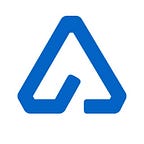For Arlene, 2020 was a formative year requiring experimentation, soul searching, and product evolution. Over the year, Arlene morphed from being a programmatic AR ads product to a company that’s democratizing immersive marketing for enhanced consumer experiences.
The company’s shift led to product-market fit and foundational traction making 2021 an exciting year to accelerate and scale the company. As Arlene rings in the new year, here are some lessons learned and product roadmap teasers that give more insight into how the company is transforming and revolutionizing the immersive industry.
Simplifying Demand
One of Arlene’s biggest mistakes was initially focusing on supply-side AR ads products. Launching with an SDK and publisher UI, Arlene was attractive to indie AR app developers who wanted monetization tools, however, they lacked direct ad sales teams.
Since programmatic demand-side platforms and exchanges have not yet adopted 3D/AR formats, this placed the onus on Arlene to sell, build, and traffic ad campaigns while keeping developers incentivized to keep the SDK integrated. It created a chicken and egg dilemma for a market that was still niche.
One of the reasons 3D/AR formats have not yet been more widely adopted is because of the high barriers of entry for implementation into brands’ marketing strategies. Solutions are pricey, platform-specific, labor-intensive, and one-off.
Arlene set forth to simplify the process for creating and delivering 3D/AR campaigns. It was apparent that brands were interested in 3D/AR and believed it would increase engagement, but the exact content and strategy remained ambiguous. It also often carried a stigma of being kitschy and capable of detracting from brand quality if poorly executed.
Arlene developed demand tools that brought utility and standardization through templated, branded experiences. Additionally, these experiences were no longer limited to in-app; they could run on the web, app, and social, which inherently increased Arlene’s addressable market.
The templates made it easy for brands and allowed for focus within certain use cases and verticals. For example, a template using simple face tracking empowers virtual try-on experiences for sunglasses, hats, and jewelry brands, and also opens up the opportunity for tracking other objects to the face for fun branded interactions.
With demand-side products, Arlene also decided to focus purely on building tools to enable creative teams and move away from in-house 3D design. Most brands that Arlene has worked with so far have creatives or work with marketing agency designers who are proficient with 3D. For brands that don’t have access to these resources, Arlene has partnered with 3D content creation providers.
Expanding beyond ads
Arlene’s ad templates gave the company momentum with demand-side traction, however, 3D/AR advertising was still a nascent market requiring a lengthy sales cycle. With the acceleration of remote shopping due to COVID-19 and quickly expanding eCommerce solutions such as Shopify, Arlene evaluated how its products could improve the digital shopping experience as a whole.
For brands, 3D/AR product preview and virtual try-out capabilities represented a large opportunity to better connect with shoppers, increase engagement, boost conversions, and decrease product returns by creating a better product visualization experience for the customer.
With the broader vision, Arlene started attracting brands in the fashion and consumer goods spaces interested in immersive, experiential marketing. A notable partnership launched with Coach, where Arlene built an immersive artscape for the Disney Mickey Mouse x Keith Haring product line. Arlene developed the experience and enabled localization such as language, products, descriptions, and CTAs using a content management system tailored towards 360 showrooms. Arlene also launched a similar, smaller-scale experience for Muttropolis which leveraged 2D images from a Shopify product feed.
Clients can use Arlene’s tools for rinse and repeat, modular, and more cost-effective experiences than other solutions in the market. From a business model perspective, providing turnkey self-service editors and CMS in addition to ads and managed services gave multiple revenue streams. Arlene charges a monthly SaaS fee, while upside can be realized through advertising volume and project customizations.
Arlene’s roadmap: personalization and intelligence
After launching self-service editor tools for 360 showrooms, 3D/AR product preview, and virtual try-out, Arlene plans to enhance its products with additional eCommerce elements. With deeper eCommerce integrations, Arlene can extract personal shopping preferences from 1st party data such as order history, product preferences, and other shopping behaviors. Combining elements of experiential marketing with optimized conversion tools, Arlene also plans to make its experiences more easily shoppable with direct payment integrations.
For real-world type experiences, Arlene has been experimenting with 360 camera and video footage, creating digital representations of physical events and tours. An early example can be seen with the tours Arlene put together for Erie Sports Commission, complete with informational touchpoints. With 360 video footage, opportunities exist for Arlene to feature physical events while including interactive components such as 3D/AR product preview and annotated information that can better inform consumers and ideally increase purchases and brand stickiness.
Stay tuned as Arlene continues to bring exciting new experiences and products to market. If you’re interested in learning more about the product, please contact us and we’d be happy to provide more information.
